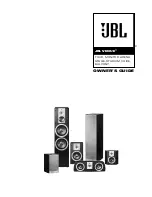
P83791 J
Sheet 1 of 2
Wheelock
273 Branchport Avenue
Long Branch, N.J. 07740
(800) 631-2148
Thank you for using our products.
INSTALLATION INSTRUCTIONS
STH-15 HORN SPEAKER WITH MULTI-TAP TRANSFORMER
AND CAPACITOR FOR DC LINE SUPERVISION
Use this product according to this instruction manual. Please keep this instruction manual for future reference.
MODEL:
STH-15S-ULC
Grey
ULC Listed under CAN/ULC-S541-2016 for Speaker Appliances
STH-15SR-ULC
Red
ULC Listed under CAN/ULC-S541-2016 for Speaker Appliances
GENERAL:
Wheelock STH-15S-ULC and STH-15SR-ULC Horn Speakers are Listed for indoor fire protection service under Standard ULC-
S541-2016 (Speakers for Fire Alarm and Signaling Systems). The STH-15 is designed for multiple power requirements with high
dBA output at each power tap. STH-15 models offer a choice of field selectable taps, 0.48 to 15 Watts for use with either
25VRMS or 70VRMS audio systems. The STH-15 design incorporates a compression driver, mounted on a double re-entrant
horn for maximum output at minimum power across a frequency range of 400 to 4,000Hz. The STH-15 input is compatible with
standard DC supervision of circuit wiring by a Fire Alarm Control Panel (FACP). A capacitor is internally wired in series with the
multi-tap impedance matching transformer for this purpose.
CAUTION: Do not change factory applied finishes. “DO NOT PAINT”.
ATTENTION: Ne pas modifiez les finitions appliquées en usine. “NE PAS PEINTURER”
IMPORTANT: PLEASE READ THESE INSTRUCTIONS CAREFULLY. FAILURE TO COMPLY WITH ANY OF THE
FOLLOWING INSTRUCTIONS, COULD RESULT IN IMPROPER APPLICATION, INSTALLATION AND/OR OPERATION OF
THESE PRODUCTS IN AN EMERGENCY SITUATION, WHICH COULD RESULT IN PROPERTY DAMAGE, SERIOUS
INJURY OR DEATH TO YOU AND/OR OTHERS.
SPECIFICATIONS:
Table 1: Wattage Selector Switch Settings and dBA
Setting
70V
dB
25V
dB
1
0.9W
93
Not Used
Not Used
2
1.8W
96
Not Used
Not Used
3
3.8W
96
0.48W
90
4
7.5W
99
0.94W
90
5
15.0W
102
1.83W
93
6
Not Used
Not Used
7.0W
99
7
Not Used
Not Used
13.9W
102
NOTES:
1.
Power Handling Capacity (RMS): 15W
2.
Sound Dispersion: 70 Degrees
3.
Constant Voltage Line: 25V or 70V
4.
Frequency Response: 400 - 4,000Hz (@ Full Rated Output)
5.
Sound Level (Peak): 120dB at 15W, 1 Meter
6.
Dimensions: 7-7/8W X 8-3/4H X 9-5/16L
IMPORTANT:
Do not place switch in settings marked "not used". Failure to comply with these restrictions may cause damage
to components and will void the warranty.
Copyright 2021 Cooper Wheelock, Inc. dba Cooper Notification.
NOTE:
STH-15 Horn Speaker is not intended for use in hazardous locations.
INSTALLATION INFORMATION:
There is a slotted shaft, underneath the cable entrance interface adapter, which operates a 7-position selector switch. Remove
the interface adapter and set the switch for the desired wattage at the specified speaker line voltage (25V or 70V). Adjust the
switch by turning the slotted shaft until the end of the slot which is opposite the flat on the shaft points to the desired number.
The wattage provided at each selector number is shown on the decal affixed to the rear of the housing.
MOUNTING INFORMATION:
The STH-15 Horn Speaker may be wall mounted by simply using the holes in the swivel base to locate and drill mounting holes.
Mount the base to the surface with appropriate hardware. Slots are also provided in the base for banding straps, to allow
mounting to beams, poles, and girders. The mounting base is also fully adjustable in both the vertical and horizontal planes (See
Figure 1).
Figure 1:
WING NUT FOR ROTATION AND
SWIVEL ADJUSTMENTS
BASE ROTATES 360 DEGREES
BANDING SLOT (2)
MOUNTING HOLE (3)
MOUNTING ARM
SWIVELS
OVERHEAD VIEW OF
MOUNTING BASE
(SHOWN WITHOUT HORN)
IMPORTANT
: Loosening the wing nut will allow for both pitch and rotation of the unit.
(When adjusting horn position, be careful not to lose adjusting hardware.)
The interface adapter (mounted to the horn) permits conduit connection. The interface adapter is threaded for standard 1/2"
pipe, and will accommodate BX cable, flexible or rigid conduit and matching connectors. The interface adapter is shown in
Figure 2 below.
Figure 2:
INTERFACE ADAPTER




















